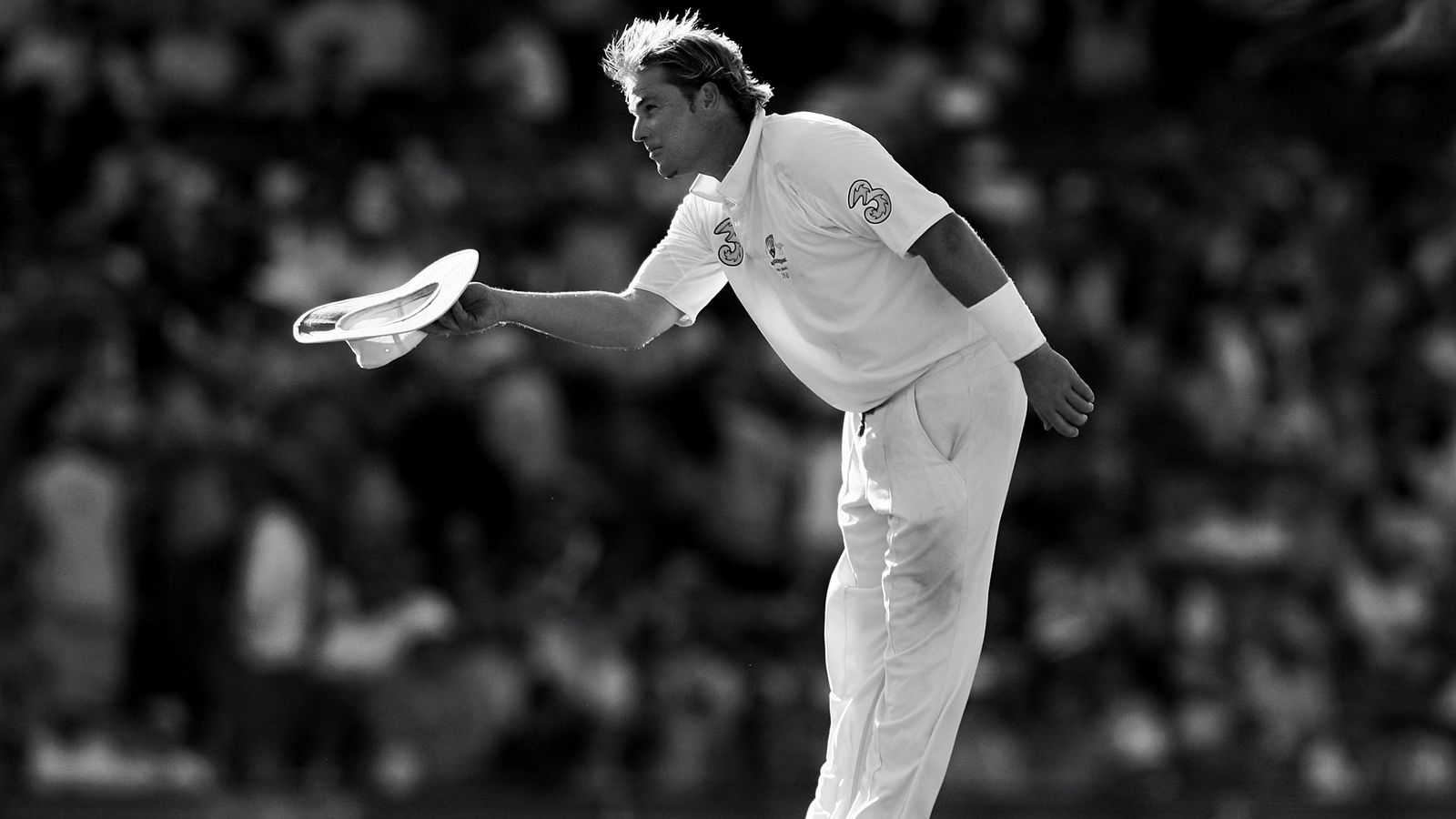In the past half-century of cricket, two balls are remembered above all others. One, starting an Ashes series, veered embarrassingly wide from England’s Steve Harmison in 2006, and the other was a thing of magic from Shane Warne.
23-years-old, blonde hair flopping, he landed the ball outside the leg stump of England captain Mike Gatting; spinning and dipping, it turned off the pitch and zipped passed the stunned batter, hitting his off stump.
It was Warne’s first ball in a test match in England, in 1993 at Old Trafford, Manchester.
To build a career to match that opening, and the hype it generated, required exceptional levels of talent and personality. Warne had both.
Please use Chrome browser for a more accessible video player
He possessed the air of someone who had strolled out of the Bondi waves and onto the cricket field to wreck another England innings, quite possibly stopping off for a couple of tinnies along the way.
Of the deluge of tributes from cricketing greats, perhaps India’s Sachin Tendulkar put it best: “There was never a dull moment with you around, on or off the field.”
He was not proud of all of it. Womanising, alcohol, a drugs ban, a fine for taking money from a bookmaker.
Shane Warne: Legendary Australian cricketer dies aged 52 after suspected heart attack
Shane Warne: Legendary Australian cricketer dies aged 52 after suspected heart attack
Azeem Rafiq attacks Middlesex chair Mike O’Farrell over ‘painful’ comments to MPs investigating racism in cricket
One of those rare sportspeople – especially outside football – to be recognised everywhere he went, he was nonetheless generous with his time.
He dragged himself back when he went off the rails, and forged a career as a respected media performer.
But all of it was founded on his rare talent and his fierce competitiveness in over 15 years of test cricket.
He made spin bowling glamorous again – leg spin in particular.
More than a thousand international wickets came at a cost. His bowling fingers were wrecked and his right shoulder needed surgery.
But he could bat as well, as many an England bowler found to his frustration, and he had big, safe hands at slip, and was a shrewd captain.
To see Warne bowl in the mind’s eye is to observe a short run-up, a ripped bowling action, a ball fizzing through the air with an improbable number of revolutions, an expectation that something would happen, perhaps an extravagant appeal to the umpire.
Now he’s gone, the cricketing world will be a little duller, a lot quieter, but left with so many vivid memories of a career – and a life – lived to the full.






















